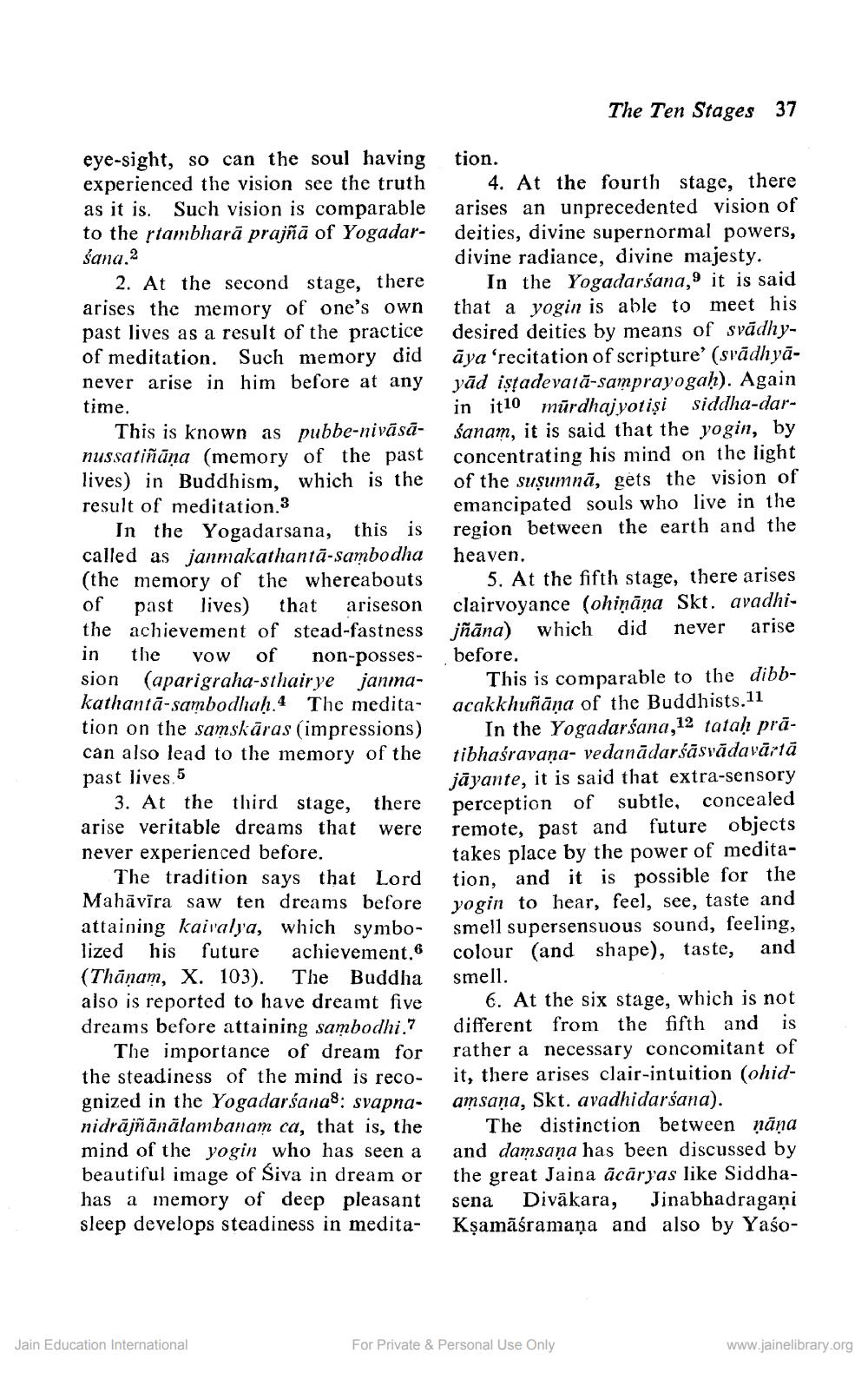________________
The Ten Stages 37
eye-sight, so can the soul having experienced the vision see the truth as it is. Such vision is comparable to the stambharā prajñā of Yogadar- śana 2
2. At the second stage, there arises the memory of one's own past lives as a result of the practice of meditation. Such memory did never arise in him before at any time.
This is known as pubbe-nivāsānussatiñāna (memory of the past
in Buddhism, which is the result of meditation.3
In the Yogadarsana, this is called as janmakathantā-sambodha (the memory of the whereabouts
the achievement of stead-fastness in the vow of non-posses- sion (aparigraha-sthair ye janma- kathantā-sambodhah.4 The medita- tion on the samskāras (impressions) can also lead to the memory of the past lives. 5 3. At the third stage, there
veritable dreams that were never experienced before.
The tradition says that Lord Mahāvīra saw ten dreams before attaining kaivalya, which symbo- lized his future achievement.6 (Thāņam, X. 103). The Buddha also is reported to have dreamt five dreams before attaining sambodhi.7
The importance of dream for the steadiness of the mind is reco- gnized in the Yogadarśana8: svapnanidrājñānālambanam ca, that is, the mind of the yogin who has seen a beautiful image of Siva in dream or has a memory of deep pleasant sleep develops steadiness in medita
tion.
4. At the fourth stage, there arises an unprecedented vision of deities, divine supernormal powers, divine radiance, divine majesty.
In the Yogadarśana,' it is said that a yogin is able to meet his desired deities by means of svādhyāya 'recitation of scripture' (svādhyāyād ispadevată-samprayogah). Again in it10 mūrdhajyotişi siddha-darśanam, it is said that the yogin, by concentrating his mind on the light of the suşumnā, gets the vision of emancipated souls who live in the region between the earth and the heaven.
5. At the fifth stage, there arises
rvoyance (ohiņāņa Skt. avadhijñāna) which did never arise before.
This is comparable to the dibbacakkhuñāņa of the Buddhists.11
In the Yogadarśana, 12 tatah prātibhasravana- vedanādarsāsvādavārta jāyante, it is said that extra-sensory perception of subtle, concealed remote, past and future objects takes place by the power of meditation, and it is possible for the yogin to hear, feel, see, taste and smell supersensuous sound, feeling, colour (and shape), taste, and smell.
6. At the six stage, which is not different from the fifth and is rather a necessary concomitant of it, there arises clair-intuition (ohidamsana, Skt. avadhidarśana).
The distinction between ņāņa and damsaņa has been discussed by the great Jaina ācāryas like Siddhasena Divākara, Jinabhadragani Ksamāśramana and also by Yaśo
Jain Education International
For Private & Personal Use Only
www.jainelibrary.org




